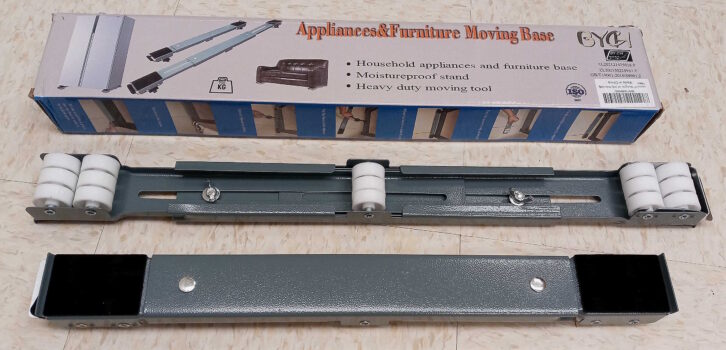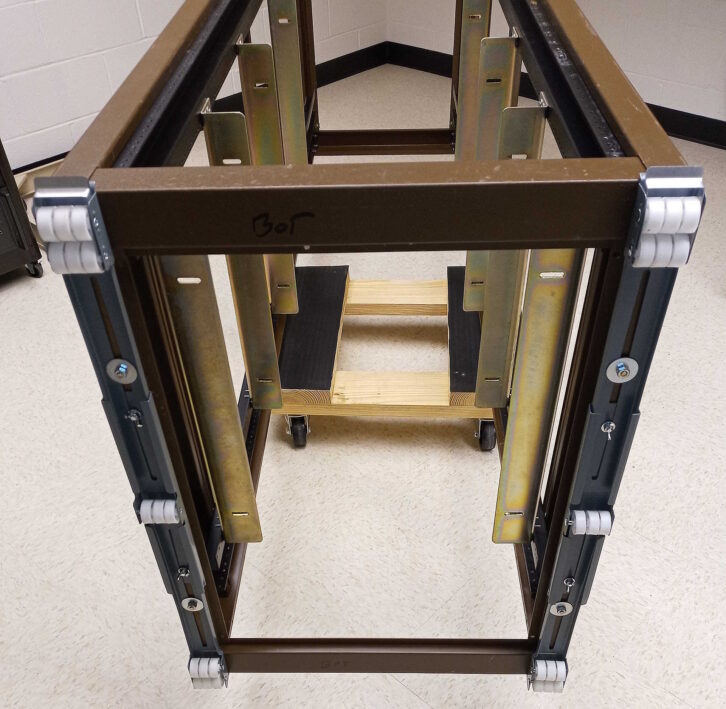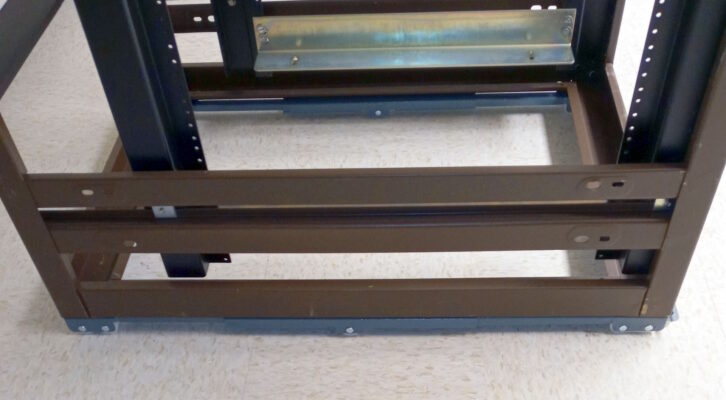Don Norwood, an engineer with Digitrak Communications, needed to install a 7-foot rack below an HVAC soffit that provided a maximum clearance of 7 feet 3 inches.
To complicate things, the rack would need to be rolled in and out from time to time. A typical mobile base fitted on the bottom, as provided by the rack manufacturer, increased the height by 4 inches, making the assembly too tall for the location.
Don discovered a variety of appliance moving bases or dollies on Amazon that can help in a situation like this.
These bases are available in a number of adjustable sizes and weight capacities. They add only about an inch to the height of your load and cost far less than mobile bases from rack manufacturers.

The set Don chose has a capacity of more than a half-ton. It includes three sets of wheels rather than just two. Don doesn’t know how it will hold up to frequent moving, but he only needs to move the rack occasionally and he has had no problems thus far.
The rolling bases are designed for the weight of the load and hold the rack in position. The design allows for adjustment of the length, so it was simple to bolt the wheels to the base.
The first image shows the kit as purchased. The second is a view of the the bottom of the rack, which has been laid on its side, with the movable base visible on the bottom. The third shows the rack resting on the movable base, ready to be loaded with equipment.

Don hadn’t come across these before and imagines they might be useful for other moving needs around the station.
In temporary situations, you only have to tilt the load high enough to slide the rollers under one edge, one side at a time, so the device should be useful for items that are too bulky for a hand truck or too heavy to slide without some sort of assistance.

Search for low-profile appliance or furniture dollies. The “Koutey 37 Moving Dollys With Wheels” for instance is rated for 1,500 pounds and costs about $30.
“Old” can work forever
After cleaning up his Western Electric REP-93A coil set, broadcast engineer Ron Hogg read the patent dates on the transformer. He saw January 1, 1916, and June 27, 1922.
His 93A version is a dual coil in a cast iron housing. Ron writes that those dates just go to show you how very long this technology has been around … and still working great for 600/600 ohm isolation!
And San Francisco’s Bill Ruck also writes in to let us know that Western Electric specified a frequency range of 35 to 8000 cycles per second!
Speaking of program audio…
Florida engineer Wayne Eckert shared about a curiosity involving a 66 block, those punch-down blocks that were common around analog telephone facilities and radio stations.
Trouble was called in by a station that lost its wired STL. They fell back to a wireless 900 MHz link, but it was marginal. The wireline link was a Special Circuit, so it received a priority dispatch.
The telco technician quickly determined there was no program audio at the handoff, which pushed the trouble back to Customer Provided Equipment (CPE).
This did not please the chief engineer, who demonstrated to the telco technician that there was audio coming from the studio, being fed from a different 66 block. Using a butt set, the technician listened to the audio and confirmed this. The technician removed his punch tool and, using the base of the tool, smacked the 66 block. The problem was solved and there was now program audio on both 66 blocks!
The moral of the story: It’s been Wayne’s experience that original 66 blocks are not designed to cross-connect circuits that are not carrying battery (48 VDC) and can give the engineer intermittent headaches at the worst possible time! Wayne suggests looking up the term “sealing current” to find out what happens.
Help keep Workbench rolling too! Send us your tips, which qualify for SBE recertification credit. Email [email protected].












